Romanian version here.
How did Nicolaus Modrussiensis presented the 27 years old Prince?
He wasn’t particularly tall but very vigorous and healthy, with a cruel and ferocious aspect, a big aquiline nose and inflated nostrils. The skin of the face was smooth and reddish, long eyelashes framed widely open green eyes made threatening by bushy black eyebrows, the face and the chin were shaved apart from the moustache. Prominent temples increased the volume of his head. A bullish neck rose from his broad shoulders on which fell his long black curly hair.
(After Matei Cazacu – Dracula, Editions Tallandier 2004, according to Nicolaus Modrussiensis, Historia de bellis Gothorum <1473>, discovered by A.Marcu “Riflessi di storia rumena in opere italiane dei secoli XIV e XV”, published in Ephemeris Dacoromana, I, Rome, 1923)

Unknown author: Vlad the Impaler’s portrait, circa 1575-1595 (Vienna, Ambras Castle, Tirol, Austria)
Mahomed II about Vlad the Impaler: „I can’t take the country of a man that does many great things” and „is capable to do even more” (according to Laonic Chalcocondil).
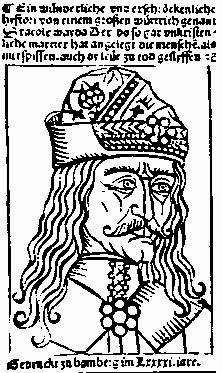
Vlad the Impaler’s portrait printed on the first page of a copy after Geschichte Dracole Waide pamphlet, that was denouncing the „tyrant’s cruelty”
(circa1488-1493), Budapest, Szechenyi Library)

Medallion portrait of Vlad the Impaler, circa 1596
(Nikolaus Ochsenbach, Stammbuch, Stuttgart Library)

Crypto-portrait. A wooden German painting from late Gothic in which Vlad is presented as Pontius Pilate hearing Jesus Christ. Viennese painter (Meister der Tafeln von Velenje), circa1462–1465. Nowadays the painting is to be found in the National Gallery (Narodna Galerja) in Ljubljana.
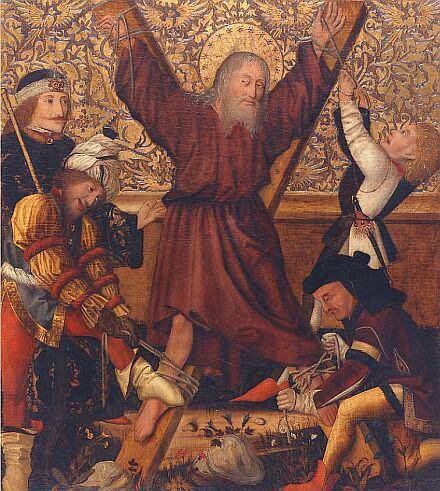
Unknown Styrian painter.: Saint Andrew’s martyrdom. Vlad is presented as Roman proconsul Aegeas. Painting on triptych altar circa 1470-1480, Austrian Gallery Belvedere, Austrian Medieval Art Museum.
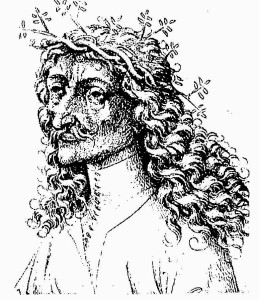
Unknown author from Upper Rhine area: Vlad the Impaler with the wedding crown. Pen drawing, circa1470-1480 (Basel, Art Museum). He is represented as the king Matthias Corvinus.
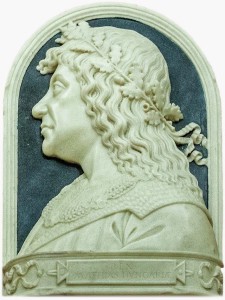
Matthias Corvinus – the big enemy-friend of Vlad the Impaler

Crucifixion of Jesus Christ with Vlad the Impaler in the right side. Painting on triptych altar, circa 1460, Vienna.
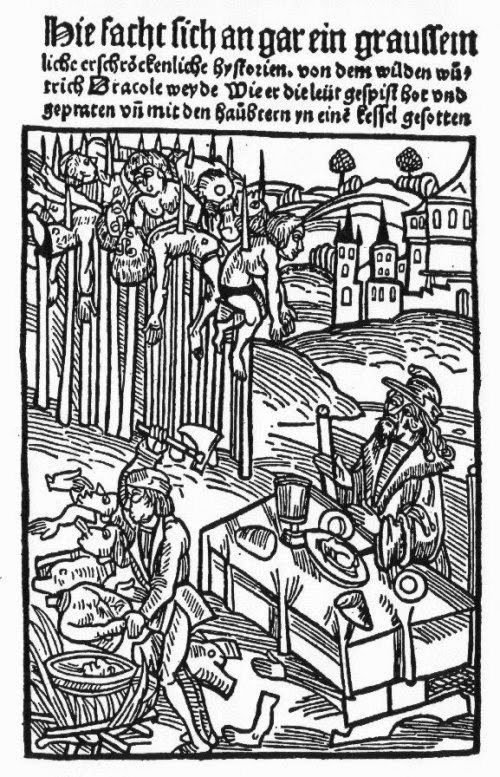
The dreadful Dracula in a wooden engraving (circa 1500)
Nurnberg. German National Museum
If we analyze the context of the time, we can see that impaling, like any other killing methods that were attributed to Vlad, wasn’t anything uncommon. As far as I know, the oldest information [about impaling] is to be found in the laws of the Babylonian king Hammurabi (1728-1686 B.C. )
Heiko Haumann – Dracula, viaţa şi legenda / Dracula, life and legend

Vlad the Impaler in a wooden engraving – circa 1488
(Klassik Stiftung Weimar, Duchess Anna Amalia Library)
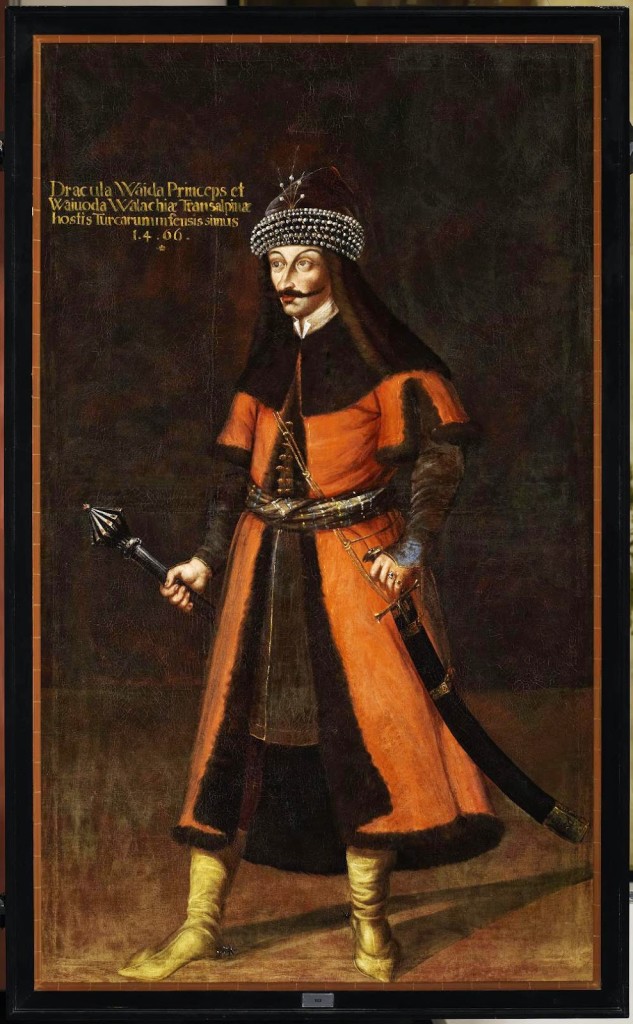
Unknown author: Vlad the Impaler’s portrait, circa 1700
(Forchenstein City, private foundation Esterhazy)

Vlad the „Devil”, Vlad the Impaler’s father. Recently discovered paining inside the house in Sighişoara
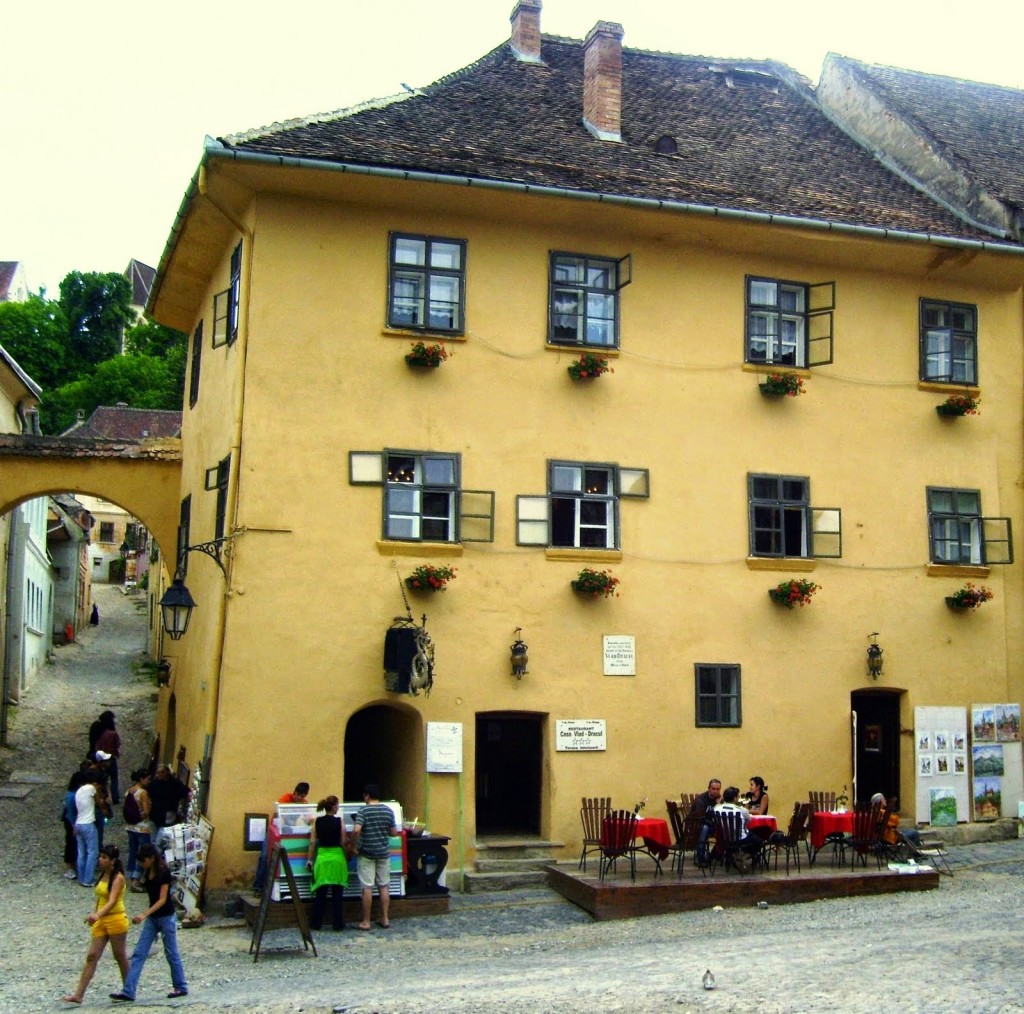
The house where Vlad the Impaler was born. Sighişoara
Poți să ne susții cumpărând cărți de la Carturesti, Litera, Librex, Libris, Cartepedia, Librarie.net, Okian.ro, Compania de Librării București, Anticariat-Unu sau Anticexlibris folosind linkurile de mai jos:
- Carturesti
- Litera
- Librex
- Libris
- Cartepedia
- Okian.ro
- Librarie.net
- Compania de Librarii Bucuresti
- Anticexlibris

Pingback: Cum arăta Vlad Ţepeş? - Istorie Veche